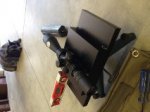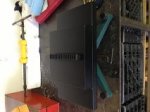Hey guys. I will be using the weight on a string and US Optics (nonfolding) bubble level on a rail to level my rifle and scope.
How would I go about keeping the rifle level while twisting the scope to align the retricle with the string on a weight?
Any tips for keeping the scope level when I am tightening down the bolts? I always cant the retricle after aligning it when I start tightening the bolts.
The US optics bubble level, is that good enough to figure out how level the rifle is? It is a pretty small bubble and I kinda eye ball it close enough.
I have a vortex bubble level that goes on a scope but that wont help me level the rifle and keep it steady while i mess with the scope.
Thanks guys.
Oh also would getting a LARGE presentation/posters sized piece of white paper and using an angle to draw two perpendicular lines work ?(I will use a 4 foot level to make sure it is parallel) Or is the weight on a string more reliable method?
I am kinda forced to level my scope at work in a dark warehouse since my house is too small and I cant focus my retricle on a string.
How would I go about keeping the rifle level while twisting the scope to align the retricle with the string on a weight?
Any tips for keeping the scope level when I am tightening down the bolts? I always cant the retricle after aligning it when I start tightening the bolts.
The US optics bubble level, is that good enough to figure out how level the rifle is? It is a pretty small bubble and I kinda eye ball it close enough.
I have a vortex bubble level that goes on a scope but that wont help me level the rifle and keep it steady while i mess with the scope.
Thanks guys.
Oh also would getting a LARGE presentation/posters sized piece of white paper and using an angle to draw two perpendicular lines work ?(I will use a 4 foot level to make sure it is parallel) Or is the weight on a string more reliable method?
I am kinda forced to level my scope at work in a dark warehouse since my house is too small and I cant focus my retricle on a string.



